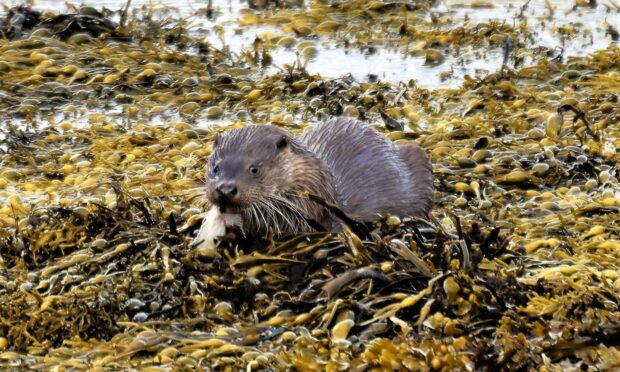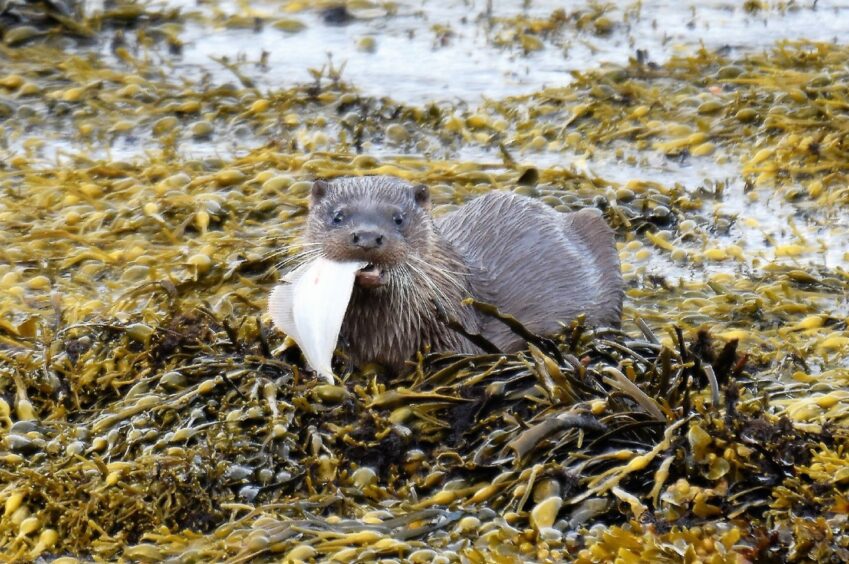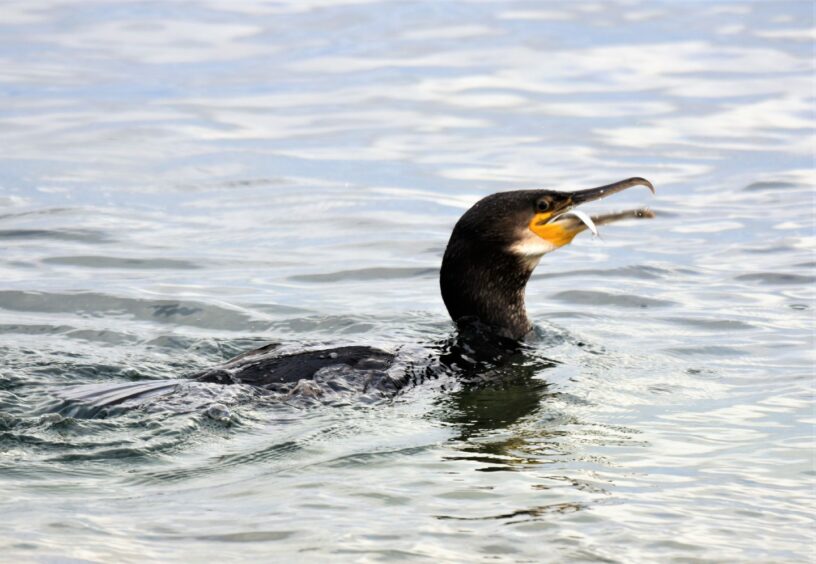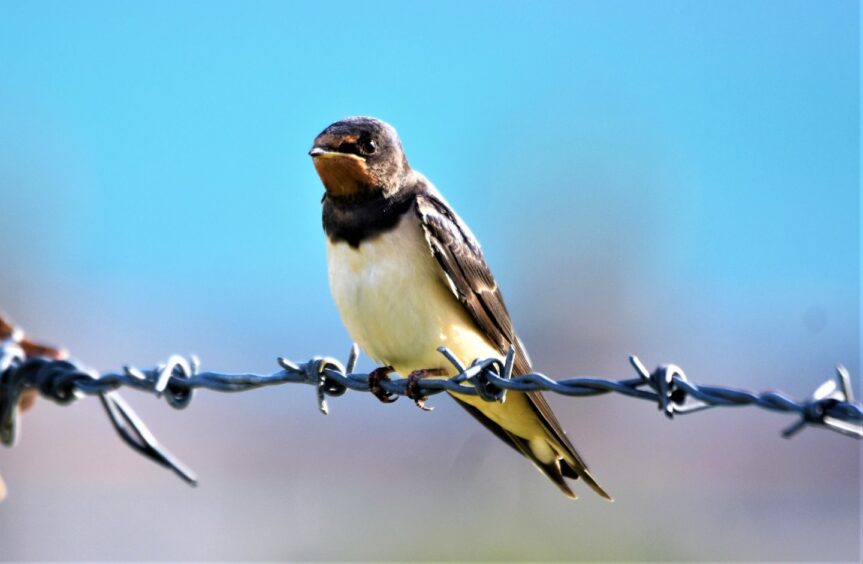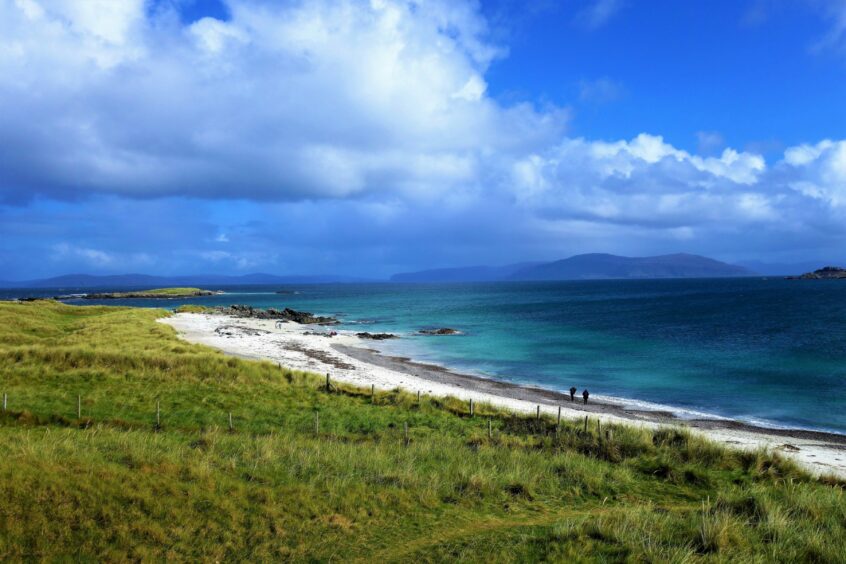A small head bobs out in the water off the Mull shore near Craignure, and I swiftly bring my binoculars into focus. Is it an otter or a harbour seal?
The animal dives under, its pointy tail flicking momentarily skywards – an otter!
The animal had caught a fish and rapidly made its way back to the rocky shore, where it emerged dripping wet and settled by a cluster of green-flecked seaweed encrusted rocks to devour its catch.
The fish was a flounder, quite a large one, and its white undersides gleamed and glowed, despite the poor light from the heavy grey skies.
The flatfish was consumed with gusto, gripped firmly by the otter’s forepaws as it tore away chunks of flesh.
As I watched the animal, this encounter reminded me of a similar one at Appin on the nearby mainland earlier this year, where I watched a pair of otters sharing their catch on the shore.
By the sea
Otters that live by the sea have a much larger food resource to draw upon than their river-living cousins, and whenever watching coastal otters, more times than not I will see one snaffle a fish or crab.
Watching this Mull otter sprung a conundrum upon my mind – in all my years of wildlife watching, I have never once seen an otter in the sea on the Scottish east coast.
I am certain some must inhabit east coast waters, given there is so much suitable shoreline, but for some reason, they have not taken up this rich feeding habitat with the same enthusiasm as west coast animals.
Sea-living otters need freshwater to wash their fur, and perhaps the reason is because there are fewer burns on the east coast.
The Isle of Mull is a stunning place for wildlife, and during my week-long visit, each day brought new surprises, including soaring golden eagles, herons prowling by the edge of sea lochs in search of fish, and migrating waders making their way southwards.
One day, close to the shore in the Sound of Mull, I watched a cormorant whip itself into a feeding frenzy after it had stumbled upon a large shoal of sprats.
The bird dived under repeatedly, only surfacing for a brief second to replenish its lungs, before swooping under the water once more.
On some occasions, its crop bulged with the sheer quantity of nutritious sprats it had caught.
Stunning Iona
I also visited Iona, a truly stunning island where history and nature merge seamlessly as one.
Despite being early October, and the weather blustery and changeable, I found a pair of recently fledged young swallows perched on a wire fence by the abbey and still being fed by their parents.
This was leaving things dangerously late, and I feared for the future of these youngsters.
They needed to be heading south quicky to embark on their mammoth migration to southern Africa, and I doubted whether they would succeed.
Nature is both beautiful and cruel, and as I left the abbey grounds, I prayed that these young birds would confound the odds and make it safely to their wintering grounds in the southern hemisphere.
